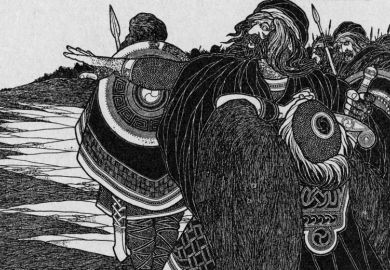Academic criticism of “Irish” literature typically emphasises the national context, without which writers connected to the Republic of Ireland (whether through birth, ethnicity or cultural affiliation) revert to being “English” by virtue of the language they most commonly use. In Irish Drama and the Other Revolutions, Susan Cannon Harris adopts, in contrast, a supranational perspective on her subject. In addition to the aesthetic context of the history of modern drama, she focuses on Irish playwrights’ engagements with international revolutionary movements devoted to the struggle against capitalism and the campaign for gender and sexual liberation.
Rejecting a “Darwinian” model of world literature that she believes mimics “the logic of capitalism” by equating literary value with literary influence, Harris focuses her splendid study on international networks of theatre practitioners and audiences opposed to the commercial theatre. This type of “Internationale-ism” represented a “system of exchange whose operations cannot be accounted for by market theory”. Because the world they worked for has not become our reality, these theatre-makers have been largely ignored by critics intent on using the past to explain the present, but their activity intersected in defining ways with that of the Irish literary revival’s most important playwrights.
Harris structures her book around case studies illustrating the practices of left culture and their impact on Irish dramatists, or vice versa, treating Ireland as “one node in a system”. Sometimes this approach results in a drastic revision of the history of Irish drama, as when she concludes that, viewed in the context of his lifelong engagement with a revolutionary version of socialism, Sean O’Casey’s celebrated Dublin trilogy “represents a temporary disruption in his overall artistic trajectory”.
Harris begins her story in London in the 1890s, where Irish-born writers including W. B. Yeats and George Bernard Shaw (soon to go their separate ways as Irish and English writers respectively) mingled in the progressive circles of the day. She distinguishes throughout between a “queer” version of socialism defined by its “insistence on pleasure as both the practice and the objective of social progress” and a purely materialist “straight” version. Readers familiar only with the social conservatism of the Irish state post-independence may be surprised to hear that Irish-identified writers at the turn of the century were more likely to be socialists of the “queer” sort. In Harris’ telling, Shaw, who recoiled from the hostility that some of his colleagues’ plays inspired, suppressed at one and the same time his Irishness, his attraction to sexual non-conformity and his yearning for a complete remaking of society.
Harris demonstrates repeatedly the links between reactionary social and gender politics. One of her aims is to give readers a sense of “the utopian possibilities created by the cooperation of socialist and sexual radicals” in order to help them reimagine a left politics in which the two are not regarded as competing.
Marilynn Richtarik is professor of English at Georgia State University. Her edition of Stewart Parker’s autobiographical novel Hopdance was published by Lilliput Press in 2017.
Irish Drama and the Other Revolutions: Playwrights, Sexual Politics and the International Left, 1892-1964
By Susan Cannon Harris
Edinburgh University Press, 280pp, £80.00
ISBN 9781474424462
Published 1 August 2017
POSTSCRIPT:
Print headline: Pick a part that’s new
Register to continue
Why register?
- Registration is free and only takes a moment
- Once registered, you can read 3 articles a month
- Sign up for our newsletter
Subscribe
Or subscribe for unlimited access to:
- Unlimited access to news, views, insights & reviews
- Digital editions
- Digital access to THE’s university and college rankings analysis
Already registered or a current subscriber?





